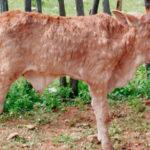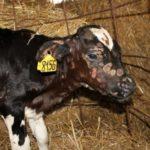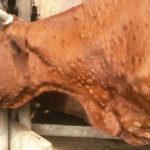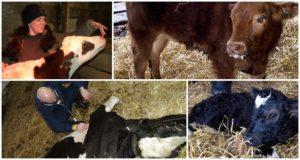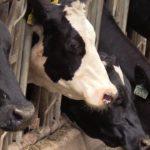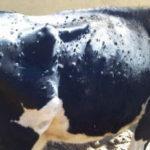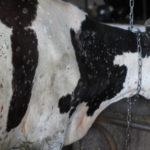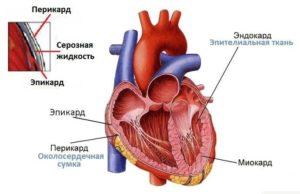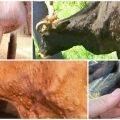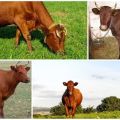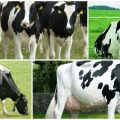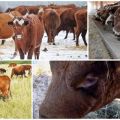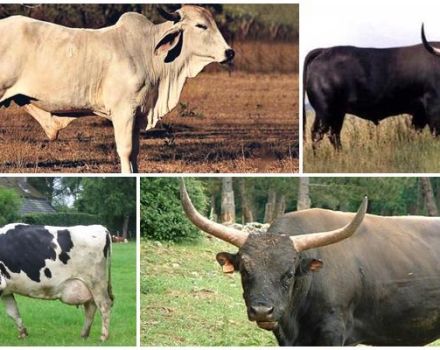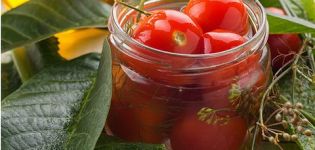Symptoms and diagnosis of lumpy skin disease, cattle treatment and prevention
Among cattle diseases, infectious ones are not the last. Diseases spread among the livestock, weaken the animals, and cause various disorders in the body. Sick animals become less productive, which causes economic damage to the farm. Consider the causes and symptoms of lumpy skin disease, methods of diagnosis and treatment, preventive measures.
Historical excursion
Nodular dermatitis is native to Central Africa, except for African countries, until recently it was also registered in Madagascar, India, and the Middle East. Since the 2000s, the disease has appeared in Asian countries, since 2014 - in Turkey, Lebanon, Egypt, Iran, since 2015 - in Russia, Armenia, Cyprus, Greece, since 2016 - in Serbia, Macedonia, Albania, Kazakhstan.
Reasons for infection
Nodular dermatitis is an infectious disease of cattle of viral origin. The pathogen, the Neethling virus, is similar to smallpox viruses. Sick individuals and carriers of the virus are considered sources of the pathogen. The pathogen is found in pieces of affected skin, saliva, blood, semen, milk, and secretions from the eyes and nose. In addition to these routes of infection, the virus can be transmitted through the bites of blood-sucking insects. The virus can be present on feed, transmitted by water, and by transport. Adult animals become infected through contact, calves through milk.
In lumpy dermatitis, a seasonality of manifestation is noted (during a humid hot period), cases of the disease are observed in areas with wet swampy areas. The infection spreads quickly, the incidence rate is 5-45% of the total number of animals in the herd. Mortality from dermatitis ranges from 1-5%, up to 90% of individuals can recover naturally.
The disease causes significant damage to livestock farms, as the meat and dairy productivity of cows decreases, the reproduction process is disrupted, and the skins are culled. A complication of dermatitis can be sterility of bulls, temporary or permanent, as well as death of animals from other infections that developed against the background of lumpy dermatitis, abortion in cows.
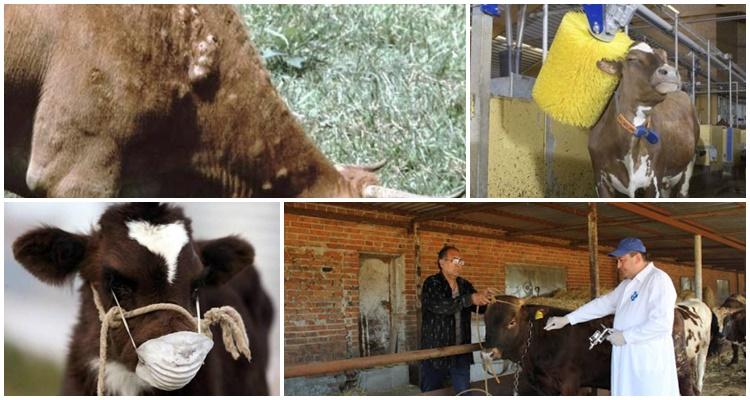
Symptoms and signs of the disease
The incubation period of lumpy skin disease is 3-30 days. At this time, no symptoms are observed. Then there is a fever, edema of subcutaneous tissues, nodules form on the skin, lesions affect the mucous membranes of the digestive tract and respiratory tract, eyes.
The acute form of the disease in cows is characterized by an increase in temperature, loss of appetite, discharge from the eyes, and lacrimation.
The next day on the head, neck, chest, udder, groin and abdomen nodules of dense structure are formed, reaching a size of 0.5-7 cm.Then a depression forms in the center of the nodules due to the separation of the epidermis, the tissues begin to necrotic. Over time, the affected tissue falls off.
With severe development of the disease, cows have prolonged fever, loss of appetite, animals lose weight, round erosive lesions and necrotic areas of a grayish-yellow color appear on the mucous membranes of the respiratory tract and digestive organs. Calves may have an atypical form of the disease, with no characteristic signs of damage. Cows that have had lumpy skin disease gain immunity from this disease for life.
Diagnostics
To make a diagnosis, epizootological data, clinical examination of sick individuals, laboratory tests of analyzes, identified pathological changes in tissues are required. For analysis, samples are taken from skin areas affected by dermatitis, bronchi, lymph nodes, smears from the oropharynx, conjunctiva, semen, milk, blood. For research, the PCR method is used.
How to treat lumpy skin disease in cattle
No specific treatment for lumpy skin disease in cattle has been developed, symptomatic therapy is used. The cows are provided with the correct conditions of keeping, care, and fed with complete food. With proper care, cows recover on their own in 90% of cases.
Folk remedies
From traditional medicine, nettle tincture is used to treat skin lesions. It's easy to make: you need to put fresh chopped nettle in a jar, pour vodka and leave to infuse for 3 weeks. Use the resulting product to disinfect nodules and make compresses.
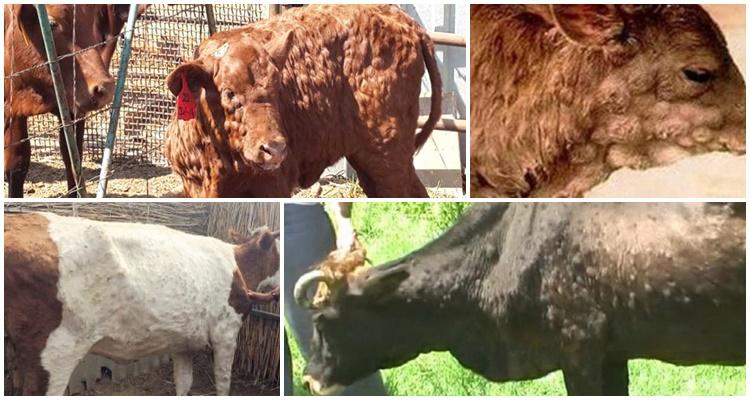
In addition to the nettle tincture, you can prepare the calendula tincture: pour the flowers over with alcohol, leave to infuse for a month. Apply in the same way as the previous one, for work you need to take a solution of 1 tsp. tinctures for 1 tbsp. water.
Medication
The affected areas are treated with disinfectants. Cows are given antibiotics and medications to support the immune system to prevent infection with other pathogens.
Proper nutrition
To feed cows with dermatitis, it is necessary so that the animals do not lack nutrients. Adequate nutrition plays an important role in maintaining immunity, helping cows to recover faster. In summer, animals are fed with fresh grass, if they graze freely, the sick should not come into contact with healthy ones. When kept in stalls, sick individuals should be kept separate from those who are not infected. In addition to grass or hay, cows should be fed in the form of concentrates, vegetables, root crops, and silage. These foods contain vitamins and minerals necessary for recovery.
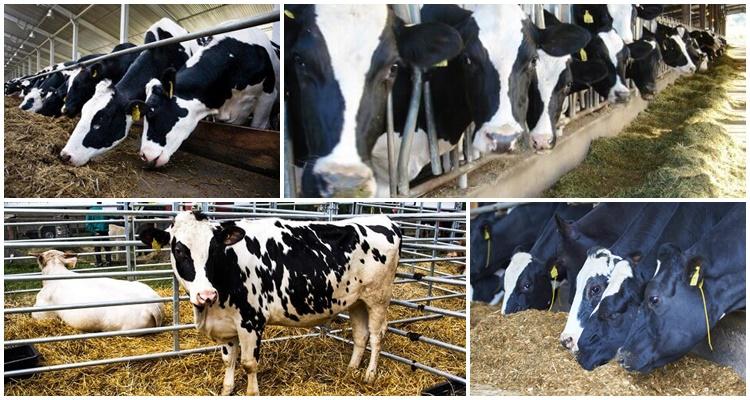
Quarantine
If cases of lumpy dermatitis are detected on the farm, quarantine is established. Rules: it is forbidden to mix sick individuals with healthy ones in the general herd, strangers should not be allowed into the territory of the economy, the entry of vehicles. Sale of products is prohibited. The remains of feed and the removed bedding must be disposed of, and all rooms must be disinfected. Milk should be pasteurized or boiled.
What is the danger of a disease for an animal
In sick individuals, weight decreases, as they lose weight, in lactating cows, milk production decreases, which affects milk yield. Mastitis may develop. There are, although rarely, aggressiveness, nervous disorders. Pregnant females may have abortions.
Problem prevention
Prevention work must be taken with full responsibility, since the infection can spread quickly. In order not to waste time on treatment, not to waste money, you need to try to prevent the disease with sanitary measures and vaccinations.
First of all, when buying cows, you need to choose them from farms where dermatitis has not been registered. Quarantine them and only then send them to the herd. Treat cows from insect attacks with repellents. Examine the skin of animals so as not to miss the first signs of the disease.
Vaccination helps to avoid infection. Vaccinations begin to be given to 3-month-old calves, repeated after a year. In disadvantaged regions, adult animals are also subject to vaccination, if they have not been vaccinated before.
Danger to humans
For humans, the lumpy dermatitis virus is not dangerous, only cows and small ruminants get sick with it. Working with sick animals is possible without fear of infection. But you cannot use fresh milk. After boiling, it becomes usable. On large farms, it is often fed to calves.
Nodular dermatitis is a new disease that has already appeared on the territory of Russia and neighboring countries.
For cows, it is not fatal, but it leads to economic damage in the form of loss of livestock weight, reduced milk yield, abortion, and decreased quality of milk and skins. Although no cure has been developed for this disease, with proper care and supportive therapy, the animals will recover.
